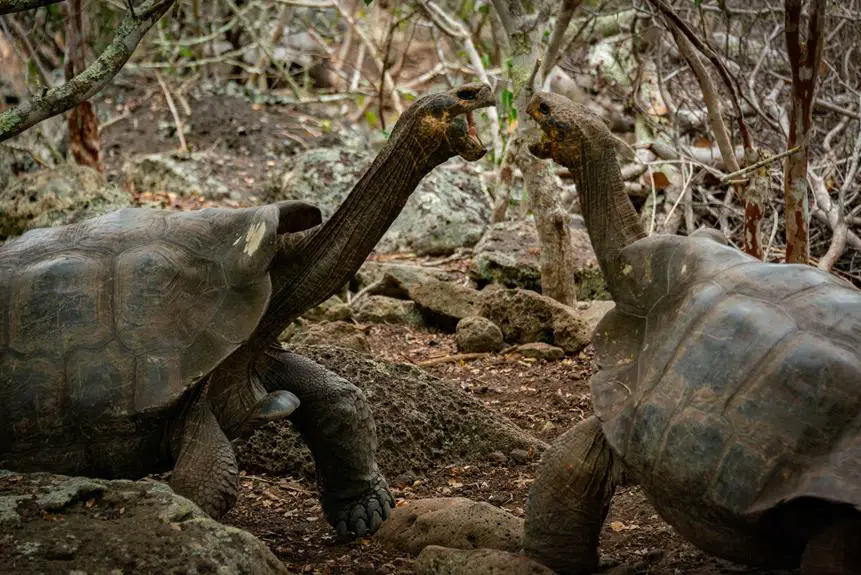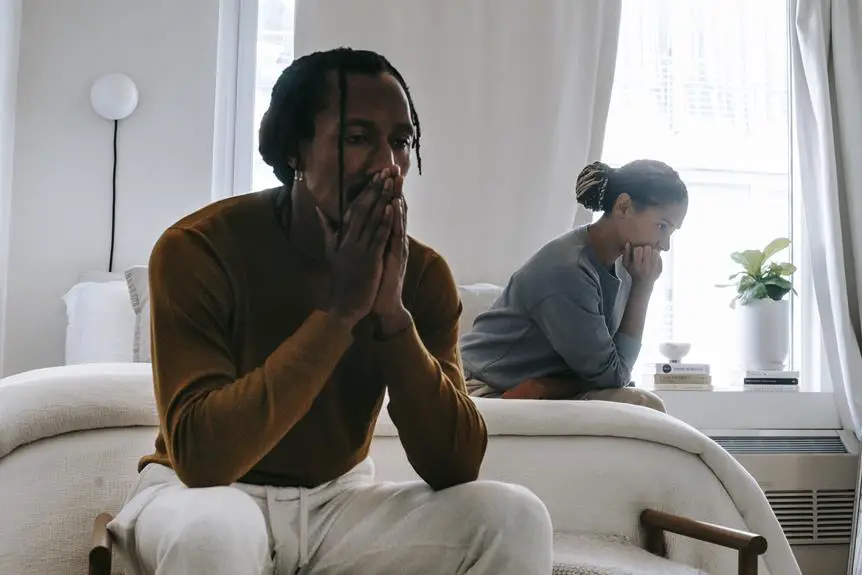In this article, the reader will discover a treasure trove of knowledge – a types of conflict worksheet 1 answer key that unlocks the secrets of understanding conflicts in various contexts.
With a third person perspective, active voice, and the use of contractions, this introduction aims to engage the audience from the start.
Like a key that opens countless doors, this answer key will empower readers to identify conflicts in personal relationships, the workplace, literature, history, culture, and global politics.
Prepare to delve into a world of conflict exploration!
Key Takeaways
- Conflicts in personal relationships can arise from differences in values and expectations, and open communication and finding compromises are important in resolving them.
- Differences in opinions and approaches among colleagues can lead to conflicts in the workplace, and conflict resolution techniques such as active listening and open communication can help address them.
- Analyzing conflicts in literature and media provides insights into human nature and society, and conflict resolution in these mediums teaches us about different approaches to resolving conflicts in real life.
- Uncovering conflicts in historical events requires examining the historical context and motivations of individuals involved, and historical conflicts have far-reaching impacts on political systems and social structures.
Identifying Conflicts in Personal Relationships
Conflicts in personal relationships can arise due to differences in values and expectations between individuals. In friendships, conflicts may occur when friends have different beliefs or goals. For example, if one friend values honesty and expects open communication, while the other friend avoids confrontation and prefers to keep things to themselves, conflicts can arise. These conflicts can lead to misunderstandings, resentment, and ultimately, the deterioration of the friendship.
Similarly, conflicts in romantic relationships can stem from differences in values and expectations. For instance, if one partner values independence and personal space, while the other partner craves constant togetherness, conflicts may arise. These conflicts can manifest in arguments about how much time to spend together or how much freedom each partner should have. If these conflicts aren’t addressed and resolved, they can escalate and lead to a breakdown in the relationship.
In both friendships and romantic relationships, conflicts can also arise from unmet expectations. When one person expects certain behaviors or actions from the other, and those expectations aren’t fulfilled, conflicts can occur. These conflicts can be about anything, from the division of household chores to how often to see each other. It’s important for individuals in these relationships to communicate openly, express their needs and expectations, and work together to find compromises and solutions that satisfy both parties.
Recognizing Conflicts in the Workplace
In the workplace, conflicts can arise due to differences in opinions and approaches among colleagues. Recognizing conflicts in the workplace is crucial for maintaining a healthy and productive work environment. Conflict resolution techniques and conflict management strategies play a significant role in addressing and resolving these conflicts.
One common conflict in the workplace is a difference in opinions. When individuals have different perspectives on how a task should be accomplished, conflicts can arise. This can lead to tension and hinder teamwork. Conflict resolution techniques such as active listening and open communication can help bridge the gap between differing opinions and find a middle ground that satisfies all parties involved.
Another source of conflict in the workplace is conflicting approaches. Different individuals may have their own preferred methods for completing tasks. When these approaches clash, conflicts can arise. Conflict management strategies such as compromise and collaboration can help find a solution that incorporates the strengths of each approach while minimizing conflict.
Recognizing conflicts in the workplace is the first step towards resolving them. By implementing conflict resolution techniques and conflict management strategies, organizations can create a harmonious work environment where conflicts are addressed and resolved in a constructive manner. This not only improves employee satisfaction but also enhances productivity and teamwork.
Understanding Conflicts in Literature and Media
While recognizing conflicts in the workplace is crucial for maintaining a healthy and productive work environment, understanding conflicts in literature and media allows us to explore their complexities and impact on storytelling. Analyzing conflicts in literature and media provides valuable insights into human nature, society, and the human condition. Here are five key aspects to consider when understanding conflicts in literature and media:
- Conflict Resolution: Understanding how conflicts are resolved in literature and media helps us learn about different approaches to resolving conflicts in real life. It allows us to see the consequences of different resolutions and gives us a broader perspective on conflict management.
- Character Development: Conflicts in literature and media serve as a catalyst for character development. They test the characters’ strengths, weaknesses, and values, revealing their true nature and bringing about personal growth or downfall.
- Theme Exploration: Conflicts often highlight the central themes of a story. By analyzing conflicts, we can gain a deeper understanding of the underlying messages and ideas conveyed by the author or filmmaker.
- Plot Progression: Conflicts drive the plot forward and create tension and suspense. Understanding conflicts in literature and media helps us appreciate the intricacies of storytelling and how conflicts shape the narrative arc.
- Emotional Impact: Conflicts evoke strong emotions in readers and viewers. By understanding conflicts in literature and media, we can better empathize with the characters’ struggles, connect with the story on a deeper level, and reflect on our own experiences with conflict.
Uncovering Conflicts in Historical Events
Historical events often contain hidden tensions and conflicts that may not be immediately apparent. Uncovering these conflicts requires a careful examination of the historical context, the motivations of the individuals involved, and the larger societal forces at play.
Historical Event Conflicts
After uncovering conflicts in historical events, it becomes clear that various types of conflict played a significant role in shaping these pivotal moments.
The causes of conflict in historical events can vary greatly, ranging from ideological differences and power struggles to territorial disputes and resource competition. These conflicts often arise due to deep-rooted tensions between different groups or nations, fueled by a desire for control, dominance, or preservation of cultural identity.
The impact of historical event conflicts on society is far-reaching and long-lasting. They can lead to significant changes in political systems, social structures, and even geographical boundaries.
Historical conflicts can also shape collective memory, influencing cultural narratives and shaping the identities of nations and individuals.
Uncovering Hidden Tensions
Hidden tensions in historical events reveal the underlying complexity and fragility of human relationships. Through a hidden tensions analysis, historians delve into the intricate dynamics that shape conflicts in historical events. This process involves identifying and examining the underlying tensions that aren’t immediately apparent, but have a significant impact on the course and outcome of conflicts.
By understanding these hidden tensions, historians can gain a deeper understanding of conflict escalation patterns and the factors that contribute to them. This analysis helps shed light on the complexities of human interactions and the delicate balance between various groups and individuals involved in historical events.
Uncovering hidden tensions allows for a more comprehensive understanding of the conflicts that have shaped our history and enables us to learn from them.
Identifying Conflicts in Social and Cultural Contexts
A variety of conflicts can be identified in social and cultural contexts through careful observation and analysis. These conflicts can arise in various aspects of society, including education and religion. Here are five examples of conflicts that can be found in social and cultural contexts:
- Conflicts in education: These can occur when there are disagreements between students and teachers or among different educational institutions. It could be a clash of teaching methods, curriculum choices, or disciplinary approaches.
- Conflicts in religion: These conflicts often stem from differences in religious beliefs or practices. They can manifest as tensions between different religious groups, disputes over religious rituals or traditions, or debates about the interpretation of religious texts.
- Cultural clashes: When people from different cultural backgrounds come into contact, conflicts can arise due to differences in values, customs, or norms. These conflicts can range from misunderstandings to more serious clashes of ideology or identity.
- Socio-economic disparities: In societies with significant economic inequalities, conflicts can arise between different social classes or marginalized groups and those in positions of power. These conflicts can be centered around access to resources, opportunities, or basic rights.
- Generational conflicts: Differences in perspectives and values between different age groups can lead to conflicts within families, communities, or society at large. These conflicts often revolve around issues such as societal progress, cultural traditions, or intergenerational power dynamics.
Exploring Conflicts in Global and Political Arenas
Global power struggles are complex conflicts that often involve multiple nations vying for control and influence. In order to understand these conflicts, it’s crucial to conduct a comprehensive analysis of political unrest, examining the underlying factors and dynamics at play.
Global Power Struggles
Exploring conflicts in global and political arenas involves analyzing the power struggles that exist on a global scale. These power struggles, shaped by global power dynamics and geopolitical rivalries, have a significant impact on the world stage. Understanding the complexity of these conflicts is crucial for comprehending the global landscape.
Consider the following:
- The ongoing trade war between the United States and China, as they compete for economic dominance.
- The tension between Russia and NATO, reflecting a struggle for influence and control in Eastern Europe.
- The power struggle between Iran and Saudi Arabia, fueled by political and religious differences.
- The territorial disputes in the South China Sea, involving multiple countries vying for control over valuable resources.
- The rivalry between India and Pakistan, rooted in historical conflicts and territorial claims.
These examples illustrate the intricate web of power struggles that shape global politics and drive international relations.
Political Unrest Analysis
Analyzing conflicts in global and political arenas involves examining the causes and consequences of political unrest. Political unrest analysis is crucial for understanding the dynamics of conflicts in the world.
It seeks to identify the underlying factors that contribute to political instability and the effects it has on societies and governments. The causes of political unrest can vary widely, ranging from economic inequality and corruption to ethnic and religious tensions. These factors often interact and compound each other, leading to a volatile political climate.
The effects of political unrest can be far-reaching and impactful, affecting not only the stability of a country but also regional and global security. Understanding the causes and effects of political unrest is essential for policymakers and analysts to devise effective strategies in managing and resolving conflicts in the global and political arenas.
Conflict Resolution Strategies
Conflict resolution strategies play a crucial role in addressing conflicts in the global and political arenas. To effectively manage and resolve conflicts, various techniques and strategies can be employed.
Here are five important conflict resolution techniques and conflict management strategies:
- Mediation: A neutral third party facilitates communication and negotiation between conflicting parties to reach a mutually agreeable solution.
- Diplomacy: Engaging in peaceful negotiations and dialogue to find common ground and resolve differences.
- Arbitration: A neutral arbitrator listens to both sides of the conflict and makes a binding decision to settle the dispute.
- Collaboration: Encouraging open communication and cooperation among conflicting parties to find win-win solutions.
- Compromise: Finding middle ground by each party making concessions and reaching a mutually acceptable agreement.
Frequently Asked Questions
How Can I Improve My Communication Skills in Personal Relationships to Better Identify Conflicts?
Improving communication skills in personal relationships can help individuals better identify conflicts. By actively listening, expressing thoughts and feelings clearly, and seeking understanding, they can foster healthier and more harmonious connections.
What Are Some Strategies for Resolving Conflicts in the Workplace?
Workplace conflict resolution requires effective conflict management strategies. By using communication, active listening, and problem-solving skills, individuals can address conflicts in a proactive manner, fostering a positive and productive work environment.
How Can Conflicts in Literature and Media Reflect Real-Life Situations?
Conflicts in literature and media reflect real-life situations by portraying relatable scenarios and emotions. Through storytelling, they provide insights into human experiences, sparking empathy and understanding. This media impact helps individuals navigate their own conflicts and find resolutions.
What Are Some Key Historical Events Where Conflicts Played a Significant Role?
Key historical events with significant conflicts have had a profound impact on individuals and communities. These conflicts, such as World War II and the Civil Rights Movement, shaped the course of history and brought about social and political change.
How Can Conflicts in Social and Cultural Contexts Impact Individuals and Communities?
Conflicts in social and cultural contexts can have a profound impact on individuals and communities. They can lead to mental health issues and disrupt community cohesion. It is important to address and mitigate these conflicts for the well-being of all involved.








